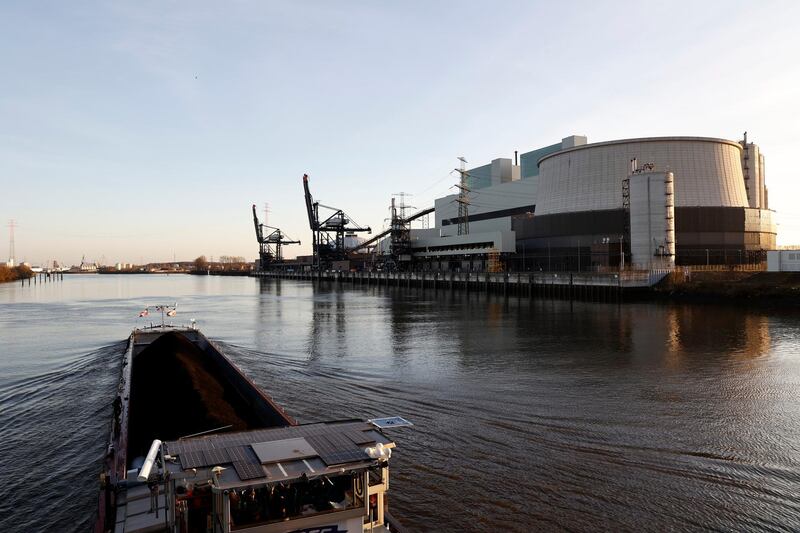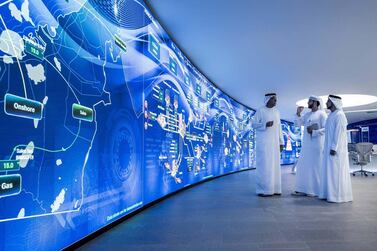A staggeringly fast rise in energy stakeholders’ appetite for hydrogen – potentially the world’s ‘new oil’ – means blueprints in the Gulf countries are transforming into real progress.
In Saudi Arabia, Air Products, Acwa Power, and Neom’s deal for a $5 billion green hydrogen-based ammonia production plant powered by renewable energy is a momentous step in a greener direction for the world’s biggest oil exporter. The project, which could be the world’s largest green hydrogen unit, will supply 650 tonnes per day of carbon-free hydrogen for global transport and reduce 3 million tonnes of carbon dioxide per year.
The kingdom’s blue ammonia shipment – another global first – to Japan in late 2020, intended to co-fire coal power generation plants, was significant in bolstering sustainable hydrogen usage and a circular carbon economy.
Hydrogen development is also high on the UAE’s agenda as Opec’s third biggest member accelerates its decarbonisation plan.
One of the several recent initiatives is Mubadala, Adnoc and ADQ’s deal to create the Abu Dhabi Hydrogen Alliance, which aims to establish the UAE’s capital as a leader in low-carbon green and blue hydrogen in emerging and international markets.
Building a national green hydrogen economy is also on the cards. To the east, DEME Concessions and OQ Alternative Energy plan to partner in a major green hydrogen plant in the Special Economic Zone at Duqm in Oman, in co-operation with The Public Authority for Special Economic Zones and Free Zones.
Putting its stamp on this burgeoning market is a clever move for Gulf leaders. Home to some of the world’s largest oil and gas producing companies, the region wants to remain relevant and be a significant stakeholder in the 21st century’s energy transition.
Blessed with high levels of solar irradiation and significant wind resources, the region has all the ingredients to deliver renewable electricity, which can enable it to become a global exporter of green hydrogen and its carrier products.
Still, more must be achieved quickly in order for the Gulf countries to emerge as one of the world’s leading hydrogen markets by the 2030s. This is especially true when considering the lead time of research and development, pilots, project construction, and sourcing finance and talent resources.
More than 30 countries have unveiled hydrogen roadmaps worldwide, with 228 large-scale hydrogen projects announced across the value chain. Of those, 85 per cent are located in Europe, Asia, and Australia, according to the Hydrogen Insights 2021 report.
If all the projects come to fruition, total investments will exceed $300bn in spending through 2030 – prosperity that the Gulf countries could benefit from. Of the $300bn, just 26 per cent can be considered mature, which means the projects are in the planning stage, have passed a final investment decision (FID), or are under construction, already commissioned or operational.
A natural two-way hydrogen relationship is potentially developing between Europe and the Gulf countries. On one side is Europe’s Hydrogen Strategy, the world’s most developed roadmap to produce the clean fuel.
On the other side of the relationship is the Gulf countries’ vast production potential and deep-rooted government support for hydrogen growth – and critically, its export ambitions.
Germany’s needs may see a natural marriage of this international supply-demand dynamic. For example, Europe’s biggest economy expects up to 110TWh of hydrogen will be needed by 2030. In order to cover part of this demand, Germany plans to establish up to 5GW of generation capacity, including offshore and onshore energy generation facilities, detailed the country’s National Hydrogen Strategy.
This corresponds to 14TWh of green hydrogen production and will require 20TWh of renewables-based electricity. Still, even with further additions up to 2040, Germany’s domestic generation of green hydrogen will not be sufficient to cover all new demand, which is why most of the hydrogen needed will have to be imported.
As such, the Middle East could become the long-term partner of choice for Germany and Europe if it responds in a timely manner to these international needs.
Transport also needs consideration. For longer distances, ammonia ships are currently the most economically viable solution. But using pipelines for shorter distances – i.e., approximately 1,800 kilometres – is the lowest-cost option, according to Strategy&. A potential import-export pathway between the UAE and Germany, for example, stretches more than 6,000 kilometers. So, shipping to Europe, followed by a land-based route needs choreographing.
Still, many questions must be answered for all regions to successfully leverage the clean fuel. How to cut the cost of green hydrogen and make it financially comparative to other renewable energy types? How to bolster the scale of blue and green hydrogen? How to build the necessary infrastructure affordably and quickly, for both national use and export plans?
The sooner the Gulf countries can answer these questions, the greater its competitive stake in hydrogen – potentially the 21st century’s biggest energy market.
John Roper is chief executive of Uniper Global Commodities Middle East






